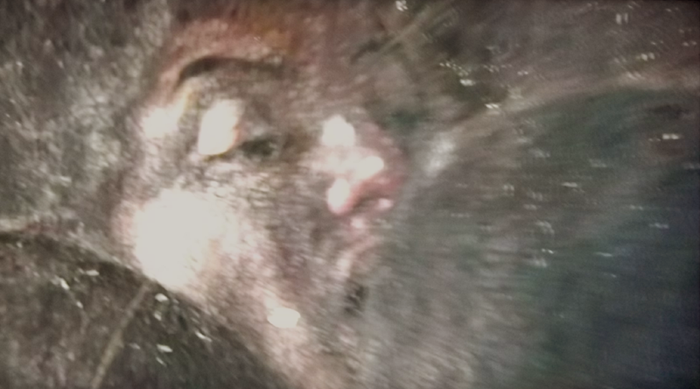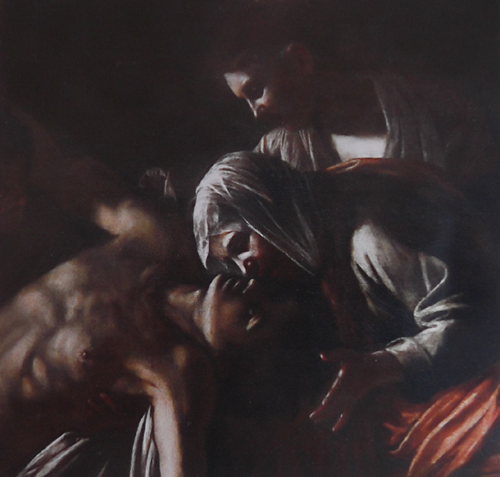Caravaggio Exhibition Raising of Lazarus in Rome
Cornelius Sullivan
Until July fifteenth at the

Raising of Lazarus,
The painting is very large and the setting is ideal. You are able to approach very close to see the brushstrokes and get a sense of the weave of the canvas. You are able to also learn about the restoration process in some detail.
The painting was transported from
It is being called Resurrezione di Lazzaro, Resurrection of Lazarus, where it should be called “Raising of Lazarus”. As with the Virgin being assumed into Heaven it is passive on the part of the subject. Jesus ascended, Mary was assumed. Lazarus did not resurrect himself, he was raised.
Caravaggio painted this after he escaped from the prison in
There are many similarities with earlier Roman works. Especially striking is the repeat pose of Jesus pointing. In the Calling of Saint Matthew in the French church in
As in a number of his group paintings there is a half hidden self portrait. The usual expressions early on where disinterest or amazement, but now because of what he has lived, being knighted, then arrested, escaping and becoming a fugitive again, and being de-knighted, de-frocked. There is an expression bordering on horror. He is the figure in the back on the far left.

Caravaggio Self Portrait, detail.
Everything comes out of the dark. That is how he paints. This is his mature somber style reflecting the intense troubles of his later life even though he is still painting a miracle. He always knew about death, and even death on the streets, but now it is what he thinks about and paints more than anything else.
What can we make of the large expanse of darkness above the figures. It is a common feature of his late tragic work. It is as if death is a major player, an important character, in the drama. In the Death of the Virgin there is the large red drape taking up the top half of that painting. Clearly it was painted later to summarize the scene and complete the composition. That painting is often called “The Dormition”, the sleeping of the Virgin. There is still hope and color although we feel the grief of the disciples. But reproductions can never convey the immensity of the dark in the Raising of Lazarus. You can not help but feel that the painter is telling you that death is immense.
He is like the old Titian and the old Rembrandt who threw away the fine pointed sable hair brushes, and all the learned craft, and all the skill, and became confident enough to load a large bristle brush with a thick glob of lead white paint and with one stroke describe, for example, the jaw of a rising man or the cheek bones of his sisters. Painting became like thinking for these masters.

Raising of Lazarus, detail.